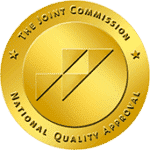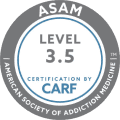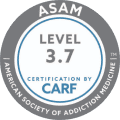Bipolar I disorder is a mental health condition marked by severe changes in mood, energy, and behavior. These fluctuations range from manic episodes, characterized by elevated mood, increased activity, and impulsivity, to depressive episodes, marked by sadness, fatigue, and loss of interest in activities.
Individuals with bipolar I may also experience mixed episodes, where symptoms of mania and depression co-occur. Diagnosis usually involves a thorough evaluation by a mental health professional. Treatment often includes a mixture of medications, such as mood stabilizers, antipsychotics, and psychotherapy.
Key Takeaways
Bipolar I disorder involves extreme mood swings, from manic to depressive episodes. Here’s what you need to know:
- Mixed episodes, where symptoms of mania and depression co-occur, are also possible in bipolar I disorder.
- Treatment typically includes a combination of medications, along with psychotherapy.
- Early intervention and prompt treatment are essential for improving outcomes and quality of life for individuals with bipolar I disorder.
The Haven Detox-New England provides comprehensive services to support individuals towards recovery from substance abuse. Call us at (844) 933-4145 to start your recovery journey.
Introduction to Bipolar I Disorder
Bipolar I disorder, a mental health condition, causes extreme mood swings, shifting between highs (mania) and lows (depression). During manic episodes, individuals may feel overly energetic, impulsive, or euphoric.
Depressive episodes bring feelings of sadness, hopelessness, and low energy. Sometimes, both moods can occur together, known as mixed episodes. Diagnosis involves a careful evaluation by a mental health professional, considering symptoms and medical history.
Symptoms of Bipolar I Disorder
Symptoms of bipolar disorder are crucial to understand for timely intervention and management. Early intervention can help individuals seek appropriate support and treatment.
Manic Episode Symptoms
Manic episodes are a defining feature of bipolar I disorder, characterized by intense shifts in mood and behavior. These episodes can be disruptive and challenging to manage, impacting daily life. During an episode of mania, individuals may experience:
- Elevated mood: Feeling overly happy or euphoric.
- Increased energy: Having high energy levels, leading to restless behavior.
- Reduced need for sleep: Feeling rested with little sleep for days.
- Racing thoughts: Rapidly jumping from one idea to another.
- Impulsivity: Engaging in risky behaviors like excessive spending or reckless driving.
Identifying the symptoms of manic episodes is essential for the management of bipolar I disorder. If you or someone you know experiences these symptoms, talk to your doctor about the possibility of bipolar disorder.
Depressive Episode Symptoms
Depressive episodes are a significant aspect of bipolar I disorder, characterized by feelings of profound sadness and despair. During a depressive episode, individuals may experience:
- Persistent sadness: Feeling down or hopeless for extended periods.
- Fatigue: Experiencing low energy levels and tiredness.
- Loss of interest: Losing enjoyment in activities once found pleasurable.
- Changes in appetite or weight: Notable changes in eating habits and body weight.
- Suicidal thoughts: Contemplating or planning self-harm or suicide.
By increasing awareness and understanding of depressive symptoms, we can provide better support for those affected by bipolar I disorder and help them navigate towards recovery and stability.
Differences Between Bipolar I and Bipolar II Disorder
Bipolar I disorder, also called manic depression, is indicated by manic episodes lasting at least seven days or manic symptoms that are severe enough to demand immediate hospitalization. In contrast, Bipolar II Disorder involves hypomanic episodes lasting at least four days and major depressive episodes.
Bipolar I and II disorders differ primarily in the severity and duration of mood episodes. Bipolar I disorder involves more severe manic episodes, often requiring hospitalization, along with depressive episodes.
In contrast, Bipolar II disorder features milder hypomanic episodes, which are less disruptive than full manic episodes but still distinct from a person’s usual mood, alongside depressive episodes. Psychotic symptoms (hallucinations or delusions) may occur in severe manic episodes of bipolar I but are rare in bipolar II.
Comparing Treatment Approaches for Bipolar I and II
Treatment approaches for Bipolar I and II disorders are similar but may vary in intensity and duration. Both disorders typically require medication to stabilize mood and manage symptoms. Antiseizure medications like valproic acid or lithium are commonly prescribed to prevent manic and depressive episodes.
However, individuals with bipolar I disorder may require more potent drugs and closer monitoring due to the severity of their manic episodes. Psychotherapy, such as cognitive behavioral therapy (CBT), is also beneficial for both types of bipolar disorder, helping individuals understand and cope with their condition.
Causes and Risk Factors of Bipolar I Disorder
Bipolar I disorder’s exact cause isn’t fully understood, but it’s believed to result from a combination of genetic, environmental, and neurobiological factors. People with a history of bipolar disorder are at a higher risk. Stressful life events, substance abuse, and certain medical conditions may also contribute to its development.
Genetic Influences on Bipolar I Disorder
Genetic influences play a significant role in bipolar I disorder, with family members of affected individuals at higher risk. While the exact cause of bipolar disorder remains unclear, research suggests that variations in multiple genes contribute to its development.
Genetic factors can influence brain structure and function, affecting a person’s mood regulation and vulnerability to mood disorders and mental illness. Learning the genetic underpinnings of bipolar disorder can aid healthcare providers in the diagnosis and management of the condition.
Environmental Factors Contributing to Bipolar I Disorder
Environmental factors, such as trauma, abuse, significant life changes, or chronic stress, can trigger symptoms of bipolar I disorder. Substance abuse, particularly alcohol or drug misuse, can also lead to the onset or worsening of symptoms. Additionally, disruptions in circadian rhythms, such as irregular sleep patterns or shift work, may influence the disorder’s course.
Diagnosis Process for Bipolar I Disorder
Diagnosing bipolar I disorder involves a thorough evaluation by a healthcare provider. This process includes assessing symptoms of bipolar disorder, such as manic episodes, depressive episodes, or both. The provider may inquire about a person’s mood, behavior, and medical history, including any substance use disorders. Diagnosis also involves ruling out other mental disorders like major depressive disorder or attention deficit hyperactivity disorder.
Mental Health Evaluations
Diagnosing bipolar I disorder involves comprehensive mental health evaluations by a qualified healthcare professional, such as a psychiatrist or psychologist. These evaluations typically include interviews to assess symptoms, medical history, and family history of mental health conditions. The healthcare provider will inquire about mood swings, energy levels, sleep patterns, and behaviors to determine if the criteria for Bipolar I Disorder are met.
Medical Tests and Observations
While there are no specific medical tests to diagnose bipolar I disorder, medical exams, and tests may be conducted to rule out other medical conditions that could cause similar symptoms. Observations of mood fluctuations, behavior patterns, and changes in functioning are essential for accurate diagnosis.
Collaborating with medical professionals and conducting thorough assessments ensures a comprehensive understanding of the individual’s symptoms and helps guide appropriate treatment.

Treatment Options for Bipolar I Disorder
Treatment for bipolar I disorder typically involves a combination of medications, such as mood stabilizers and antipsychotics, to manage mood swings.
Psychotherapy, including cognitive behavioral therapy (CBT) and interpersonal therapy, helps individuals understand and cope with their condition effectively.
Medication
Medication is often a cornerstone of treating bipolar I disorder, helping to stabilize mood swings and manage symptoms. Mood stabilizers like lithium or anticonvulsants are commonly prescribed to prevent manic and depressive episodes. Antipsychotic medications may also be used to manage severe symptoms.
Psychotherapy
Psychotherapy, also known as talk therapy, is an essential component of treating Bipolar I Disorder. Cognitive behavioral therapy (CBT) and psychoeducation help individuals learn their condition, identify triggers, and develop coping strategies to manage mood swings and symptoms.
Interpersonal and social rhythm therapy (IPSRT) focuses on daily routines and interpersonal relationships, which can help prevent mood episodes. Electroconvulsive therapy (ECT) is another intervention that may be considered in severe cases. Family therapy may also be beneficial in providing support and improving communication within the family unit.
Lifestyle Changes and Coping Mechanisms
Lifestyle changes and coping mechanisms are essential components of managing bipolar I disorder. People with this condition can benefit from adopting healthy habits such as maintaining a regular sleep schedule, eating a balanced diet, and practicing regular exercise to help stabilize mood.
Individuals must work closely with their healthcare provider to form a personalized treatment plan addressing their needs and symptoms. While lifestyle changes and coping mechanisms alone may not be sufficient to manage bipolar I disorder, they can complement other treatments, such as medication and therapy, to improve long-term outcomes and quality of life.
Living with Bipolar I Disorder
Living with bipolar I disorder involves managing mood swings and seeking support from friends, family, and healthcare professionals. Developing coping strategies, adhering to treatment plans, and maintaining a healthy lifestyle are essential for effectively managing the condition.
Building Personal and Professional Support Systems
Living with bipolar I disorder requires a strong support network of friends, family, and mental health professionals. Surrounding oneself with understanding and supportive individuals can provide emotional support during challenging times. Additionally, seeking support from coworkers or supervisors can help manage stress and maintain stability.
Managing Bipolar I Episodes
Building personal and professional support systems is crucial for individuals living with bipolar I disorder. It involves seeking assistance from healthcare providers, doctors, and support groups to navigate the challenges of the condition.
Support systems provide understanding, guidance, and encouragement during episodes of depression or mania. They can also offer valuable resources and information about managing symptoms and accessing appropriate treatment options.
Bipolar I Disorder and the Importance of Mental Health Care
Bipolar I disorder underscores the importance of mental health care in managing mood disorders. Individuals with bipolar I disorder experience extreme mood swings, from manic episodes to depressive episodes, which can significantly impact their daily functioning.
Mental health care providers can offer support, guidance, and appropriate interventions to help individuals navigate their symptoms effectively. Additionally, they can address co-occurring conditions like substance use disorders or attention deficit hyperactivity disorder, which may complicate the management of bipolar I disorder.
Frequently Asked Questions (FAQ)
What is the difference between bipolar I and II disorder?
Bipolar I and II disorders are distinct forms of manic-depressive illness. Bipolar I disorder involves experiencing extreme highs, known as manic episodes, and extreme lows (depressive episodes). Bipolar II disorder affects milder symptoms of mania, called hypomania, alongside depressive episodes. Proper treatment involves medication, therapy, and lifestyle adjustments. Genetics plays a role in both disorders, with family members of affected individuals at higher risk.
Diagnosis is based on diagnostic criteria, including irritable mood change periods. Bipolar I disorder tends to present earlier in life, often in late adolescence or early adulthood, while Bipolar II disorder may manifest later.
What is typical bipolar behavior?
Typical bipolar behavior involves experiencing extreme mood swings between manic and depressive states. During manic episodes, individuals may exhibit heightened energy, impulsivity, and euphoria. Depressive episodes are indicated by persistent sadness, low energy, and loss of interest in activities. Proper treatment for bipolar disorder includes medication, therapy, and lifestyle adjustments.
Bipolar disorder can manifest differently in men and women, often appearing in late adolescence or early adulthood. Genetics plays a significant role, with family members of affected individuals at higher risk. Alcohol use can exacerbate symptoms, impacting everyday life and leading to significant weight changes. Blood tests and brain imaging studies may provide additional insights into the biological basis of bipolar disorder.
The Haven Detox-New England
At The Haven Detox-New England, we believe in conquering mental health challenges by fostering a holistic approach to healing.
Our dual diagnosis treatment tackles co-occurring disorders head-on, handling both mental health issues and substance abuse. With various levels of care tailored to individual needs, we offer comprehensive support every step of the way.
Call us at (844) 933-4145 to learn more about our services.
Verify Insurance
Let’s get you or a loved one help with a few simple steps.




